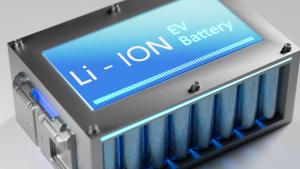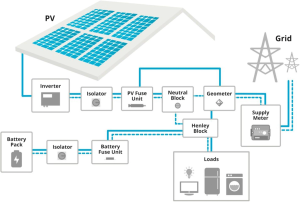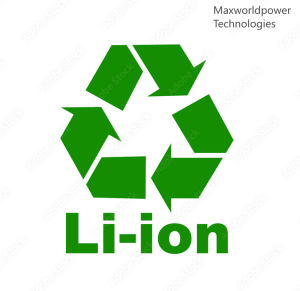Everything you need to know about the solar system

Insight of the world's solar system market
The world’s solar cell market is advancing with great success, but the economic crisis brought about by the financial turmoil not seen in a century is also a dark cloud weighing on the solar cell market. The performance of major companies such as Germany’s Q-Cells has been downgraded, and the world’s solar power market will also fall due to unfavorable factors such as weak demand, declining oil prices, and increasing competitiveness.
But at the same time, people have also seen the plan for climate change that President Biden will implement after he takes office. Japan will also implement a subsidy system to continue to popularize the application of solar cells.
At present, about 90% of Chinese solar cell companies‘ previous production is supplied to overseas markets, mainly for European countries and the United States. But due to various financial and political factors which directly affected the performance of these companies, relevant companies made timely adjustments to their business strategies and switched to the Chinese local market. There are currently 340,000 photovoltaic-related companies in China, among them, more than 30% of related companies have registered capital of more than 10 million yuan. It is clear to see that competition in China and the world is getting fierce.
Application field of the solar family
1. Solar power: (1) Small power supplies ranging from 10 to 100W, used for military and civilian life in remote areas without electricity, such as plateaus, islands, pastoral areas, border posts, etc., such as lighting, televisions, radios, etc.; (2) 3- 5KW home roof grid-connected power generation solar power system; (3) Photovoltaic water pump: solve the problem of drinking and irrigation in deepwater wells in areas without electricity.
2. Traffic fields such as navigation lights, traffic/railway signal lights, traffic warning/sign lights, Yuxiang street lights, high-altitude obstruction lights, highway/railway wireless telephone booths, power supply for unattended road squads, etc.
3. Communication field: solar unattended microwave relay station, optical cable maintenance station, broadcasting/communication/paging power system; rural carrier telephone photovoltaic system, small communication machine, soldier GPS power supply, etc.
4. Petroleum, marine, and meteorological fields: cathodic protection solar power systems for oil pipelines and reservoir gates, life, and emergency power supplies for oil rigs, marine testing equipment, meteorological/hydrological observation equipment, etc.
5. Power supply for household lamps: such as garden lamps, street lamps, portable lamps, camping lamps, climbing lamps, fishing lamps, black light lamps, tapping lamps, energy-saving lamps, etc.
6. Photovoltaic power stations: 10KW-50MW independent photovoltaic power stations, wind and solar (diesel) complementary power stations, charging stations for various large parking plants, etc.
7. The combination of solar power generation and building materials in solar buildings will enable future large-scale buildings to achieve power self-sufficiency, which is a major development direction in the future.
8. Other fields include: (1) Supporting automobiles: solar cars/electric cars, battery charging equipment, car air conditioners, ventilators, cold drink boxes, etc.; (2) Solar hydrogen production and fuel cell regenerative power generation systems; (3) Seawater Desalination of equipment power supply; (4) Satellites, spacecraft, space solar power stations, etc.
The use of solar energy is mainly divided into several aspects: small household solar power stations, large grid-connected power stations, building integrated photovoltaic glass curtain walls, solar street lights, wind and solar hybrid street lights, wind, and solar hybrid power supply systems, etc. The main application method is building integration Hybridization and wind-solar hybrid system.
Why should we install a solar system?
First of all, solar energy is inexhaustible. The solar radiant energy received by the surface of the earth can meet 10,000 times the global energy demand. As long as solar photovoltaic systems are installed in 4% of the world’s deserts, the electricity generated can meet global needs. Solar power generation is safe and reliable, and will not suffer the impact of an energy crisis or unstable fuel market.
Secondly, solar energy can be everywhere, and power can be supplied nearby, without long-distance transmission, which avoids the loss of long-distance transmission lines. Another important point is that, unlike the traditional way which is burning coal to produce electricity, the photovoltaic system does not rely on any type of fuel and has no adverse effects on the environment, which makes it environmentally friendly and ideal clean energy.
The solar power generation system has a short construction period and it is convenient and flexible. We can also add or reduce the amount of solar power arbitrarily according to the increase or decrease of the load to avoid waste. What’s more, it is easy to operate and maintain and the operating cost is low, therefore, it is especially suitable for unattended use.

Conclusion
The solar family is becoming an important role in our life. Although the solar system has its inevitable disadvantages, such as the initial investment could be relatively high and when used on a large scale, it takes up a certain amount of space, the advantages still outweigh the disadvantages when we consider sustainability in the long term. To find more information about green energy, please visit our previous post regarding the environmental effects of lithium batteries.












